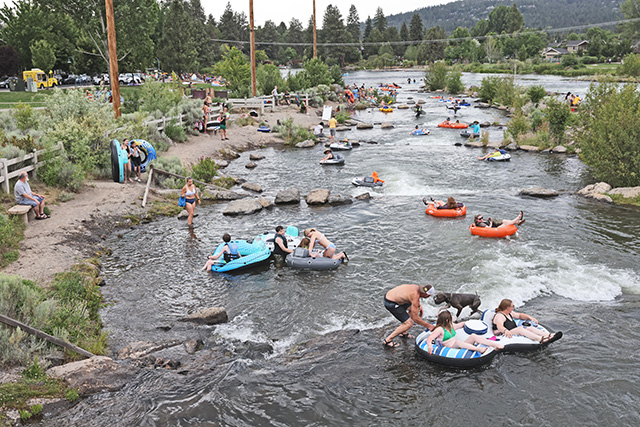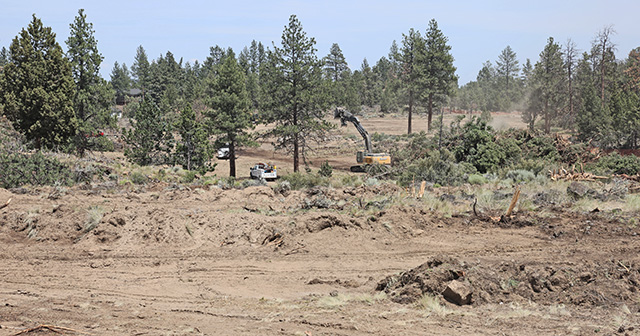Colleges turn online to ease burdens
Published 5:00 am Wednesday, May 1, 2013
SAN JOSE, Calif. — Dazzled by the potential of free online college classes, educators are now turning to the gritty task of harnessing online materials to meet the toughest challenges in American higher education: giving more students access to college, and helping them graduate on time.
Nearly half of all U.S. undergraduates arrive on campus needing remedial work before they can begin regular credit-bearing classes. That early detour can be costly, leading many to drop out, often in heavy debt and with diminished prospects of finding a job.
Meanwhile, shrinking state budgets have taken a heavy toll at public institutions, reducing the number seats available in classes students must take to graduate. In California alone, higher education cuts have left hundreds of thousands of college students without access to classes they need.
To address both problems and keep students on track to graduation, universities have begun to blend the new massive open online courses, created to deliver elite college instruction to anyone with an Internet connection, into their curriculum.
While the courses, known as MOOCs, have enrolled millions of students around the world, most who enroll never start a single assignment, and very few complete the courses. So to reach students who are not ready for college-level work, or struggling with introductory courses, universities are beginning to add extra supports to the online materials, in hopes of improving success rates.
At San Jose State, for example, two pilot programs weave material from the online classes into the instructional mix — and allow students to earn credit for them.
“We’re in Silicon Valley, we breathe that entrepreneurial air, so it makes sense that we are the first university to try this,” said Mohammad Qayoumi, the university’s president. “In academia, people are scared to fail, but we know that innovation always comes with the possibility of failure. And if it doesn’t work the first time, we’ll figure out what went wrong and do better.”
In one pilot program, the university is working with Udacity, a company co-founded by a Stanford professor, to see whether around-the-clock online mentors, hired and trained by the company, can help more students make their way through three fully online basic math courses.
The tiny for-credit pilot courses, open to both San Jose State students and local high school and community college students, began in January, so it is too early to draw any conclusions. But early signs are promising, so this summer, Udacity and San Jose State are expanding those classes to 1,000 students — with tuition of only $150 a course.
San Jose State has already achieved remarkable results with online materials from edX, a nonprofit online provider, in its circuits course, a long-standing hurdle for would-be engineers. Usually, 2 of every 5 students earn a grade below C and must retake the course or change career plans. So last spring, Ellen Junn, the provost, visited Anant Agarwal, an MIT professor who taught a free online version of the Circuits class, to ask whether San Jose State could become a living lab for his course, the first offering from edX, an online collaboration of Harvard and the Massachusetts Institute of Technology.
Junn hoped that blending MIT’s online materials with live classroom sessions might help more students succeed. Agarwal, the president of edX, agreed enthusiastically, and without any formal agreement or exchange of money, he arranged for San Jose State to offer the blended class last fall.
The results were striking: 91 percent of those in the blended section passed, compared with 59 percent in the traditional class.
“We’re engineers, and we check our results, but if this semester is similar, we will not have the traditional version next year,” said Khosrow Ghadiri, who teaches the blended class. “It would be educational malpractice.”
It is hard to say, though, how much the improved results come from the edX online materials, and how much from the shift to classroom sessions focusing on small group projects, rather than lectures.
Said Junn, “We want to bring all the hyperbole around MOOCs down to reality, and really see at a granular level that’s never before been available, how well they work for underserved students.”
Until now, most of the millions of students who register for online courses could not earn credit for their work. But that is changing, and not just at San Jose State. The three leading providers, Udacity, EdX and Coursera, are all offering proctored exams, and in some cases, certification for transfer credit through the American Council on Education.
Qayoumi favors the blended model for upper-level courses, but fully online courses like Udacity’s for lower-level classes, which could be expanded to serve many more students at low cost. Traditional teaching will be disappearing in five to seven years, he predicts, as more professors come to realize that lectures are not the best route to student engagement, and cash-strapped universities continue to seek cheaper instruction.
“There may still be face-to-face classes, but they would not be in lecture halls,” he said. “And they will have not only course material developed by the instructor, but MOOC materials and labs, and content from public broadcasting or corporate sources. But just as faculty currently decide what textbook to use, they will still have the autonomy to choose what materials to include.”







